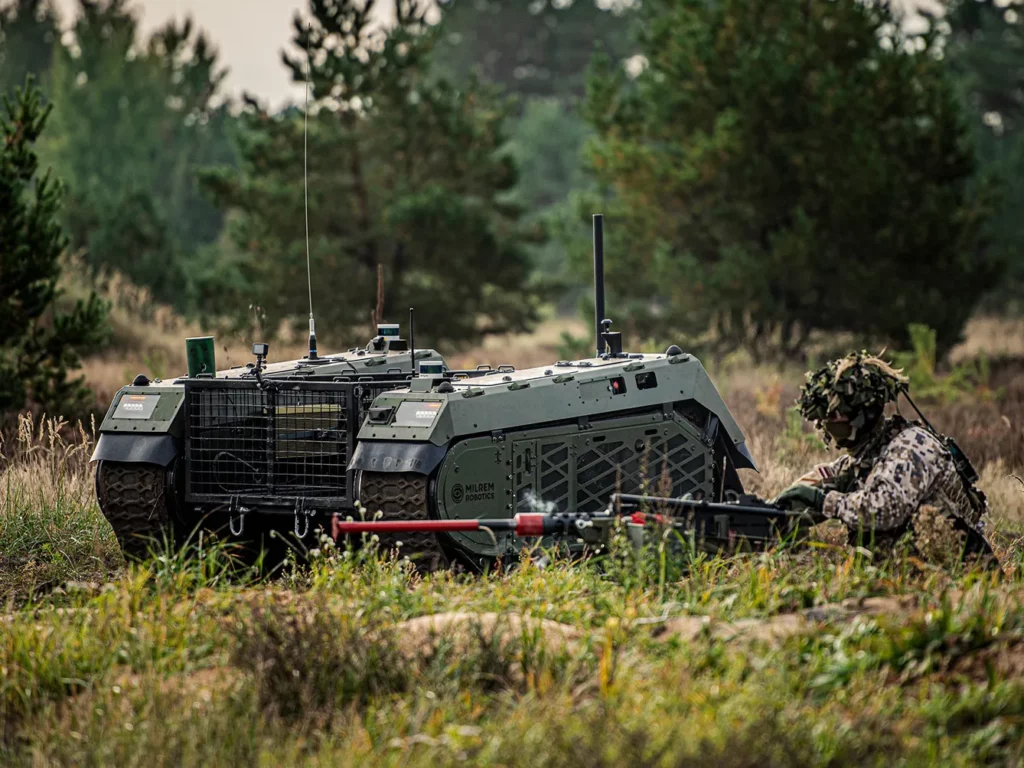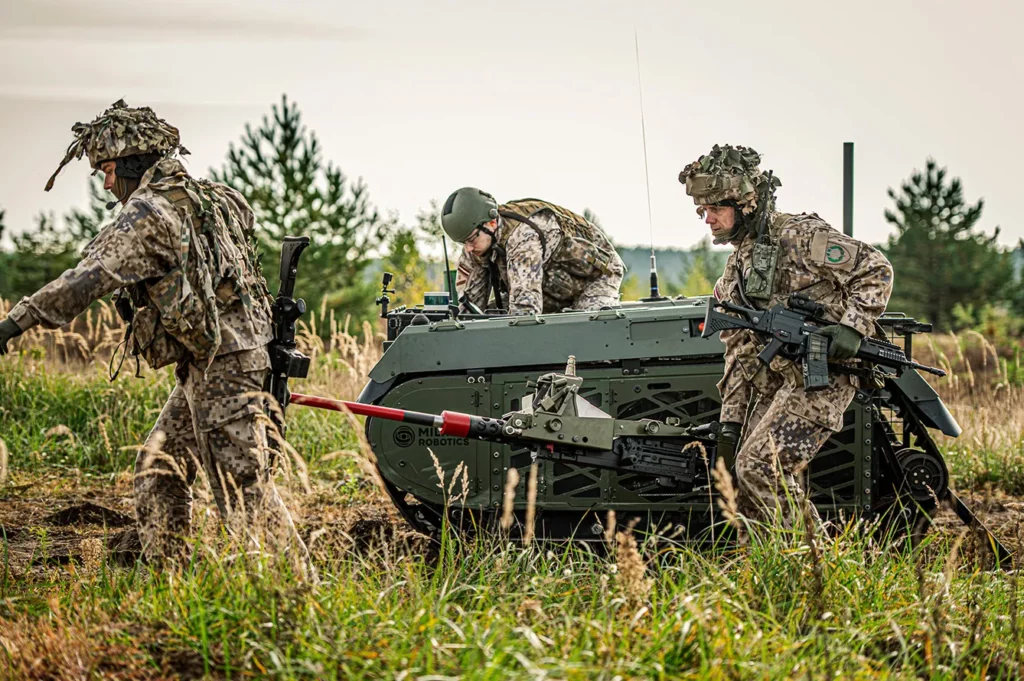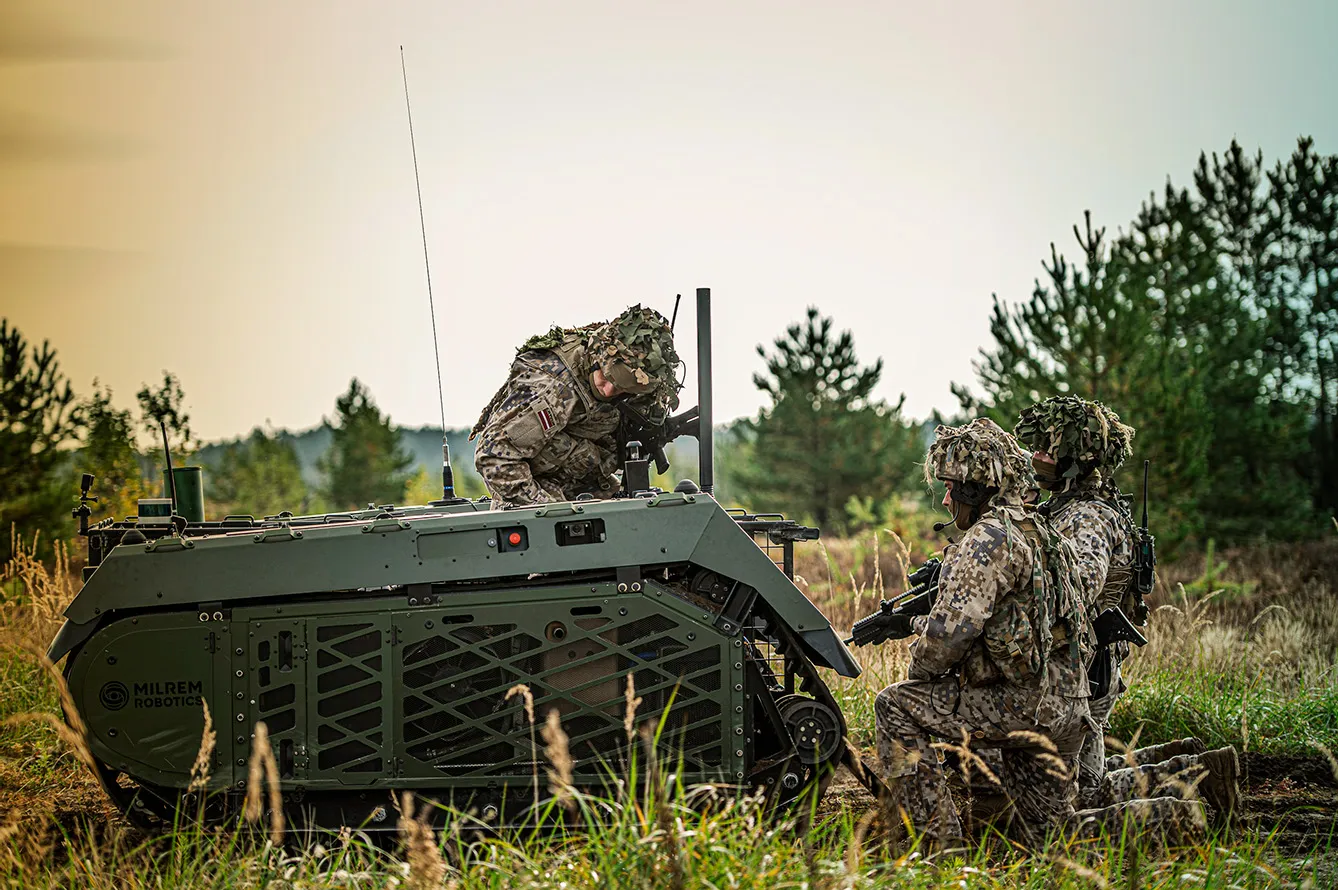Today the world’s armies are increasingly turning their attention to unmanned combat machines, and it could be said that history has come full circle. The Germans conducted some of the first trials with unmanned vehicles of a military nature during World War Two. They were also the first to use these vehicles in a live-fire combat environment. A Leichter Ladungsträger Sd.Kfz.302 and 303 Goliath gained grim fame during the Warsaw Uprising in 1944 in Poland, although it was only a rather primitive, suicidal, two-cylinder engine-powered demolition charge carrier guided by an unrolling cable. Its overall effectiveness was debatable. But the seed was sown. The temptation to replace at least some soldiers on the battlefield with a machine prevailed. The 21st century has arrived, and with it, the technology by which that temptation is beginning to find its outlet.
A modern incarnation of an old idea
In 2015, Milrem Robotics of Estonia unveiled the first serial samples of a new Tracked Hybrid Modular Infantry System (THeMIS)– a land drone designed to support infantry on the battlefield. “Modular” is a keyword that distinguishes THeMIS from its distant ancestor Goliath. The open architecture makes the Estonian land-based drone fully configurable for a number of tasks, both strictly combat and non-combat, like CASEVAC and logistics.


It all depends on the needs. Of course, robots characterized by a certain degree of modularity have entered service before, especially in police forces. But compared to THeMIS , they look like remote-controlled toys, no matter how many and how big guns they carry.
THeMIS’ first iterations
While the very first testbeds for a new UGV platform were not very spectacular in terms of military inclination towards tools of destruction, they can be talked about as a certain battlefield revolution. The first drones showed previously unseen configurations that allow the transportation of wounded or supplies. Suddenly logistics in the tactical dimension, the importance of which is somewhat overlooked in favor of the fascination with the ability to hit targets, becomes robotized. It looks innocent enough…
…but it doesn’t take much time, even in field conditions, for the same “stretcher on tracks” to suddenly turn into a carrier for reconnaissance sensors, a large-caliber machine gun, a grenade launcher, a launch platform for anti-tank missiles, and even a carrier and mother unit for a swarm of flying drones. Due to its modular design, one specific unit of the THeMIS can theoretically fulfill all these roles depending on ad hoc needs.
Autonomy in operation
The diverse and dynamic ground environment generates very different challenges for autonomous vehicles compared to homogeneous water and air environments. This makes the concept of THeMIS even more interesting. THeMIS’s ability to perform its duties in variable and unpredictable off-road conditions is also configurable. The manufacturer has provided for the installation of MIFIK (Milrem’s Intelligent Functions Integration Kit). The abbreviation stands for all necessary hardware and software based on deep learning algorithms and neural networks that enable advanced autonomous functions.
These are follow-me mode and the ability to set a route with waypoints, RTB (return to base) mode, as well as detection and avoidance of obstacles. The software includes an intuitive mission planner that allows customization of every possible mission parameter and UGV (Unmanned Ground Vehicle) behavior, even on GNSS-denied (Global Navigation Satellite Systems) and radio-jammed battlefields.
Leader of military robotics
THeMIS manufacturer, Estonian Milrem Robotics, is emerging as a European leader with a clear development path in the military unmanned vehicle industry. This is evidenced by a number of agreements signed with serious contractors, such as Israel’s UVision Air, which develops advanced systems of smart loitering munitions (integration with THeMIS), and Germany’s Krauss-Maffei Wegmann, a manufacturer of military vehicles and simulators.
Like many other weapons, it seems that THeMIS will undergo the ultimate test in Ukraine. The current conflict in that country is rapidly verifying military concepts of the past half-century. On November 29, 2022, Estonia’s Milrem Robotics and Germany’s KMW (Krauss-Maffei Wegmann) announced the signing of a contract to supply 14 THeMIS unmanned ground vehicles to Ukraine. They are due to arrive in Ukraine by the end of 2022. We look forward to hearing how they perform in the combat zone.
See Also: The Sky Is the Limit for the Three Seas Drone Project







